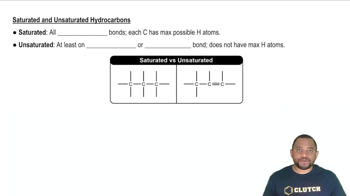Here are the essential concepts you must grasp in order to answer the question correctly.
Solubility Product Constant (Ksp)
The solubility product constant (Ksp) is an equilibrium constant that applies to the solubility of sparingly soluble ionic compounds. It is defined as the product of the molar concentrations of the ions, each raised to the power of their coefficients in the balanced equation. For calcium oxalate (CaC2O4), Ksp can be expressed as Ksp = [Ca^2+][C2O4^2-], where the concentrations are determined at saturation.
Recommended video:
Solubility Product Constant
Saturation and Concentration
A saturated solution is one in which the maximum amount of solute has been dissolved at a given temperature, resulting in a dynamic equilibrium between the dissolved ions and the undissolved solid. The concentration of the ions in a saturated solution can be calculated from the mass of solute present and the volume of the solution, which is essential for determining Ksp.
Recommended video:
Saturated and Unsaturated Hydrocarbons
Stoichiometry of Dissolution
Stoichiometry in the context of dissolution refers to the ratio of ions produced when a compound dissolves in water. For calcium oxalate, the dissolution can be represented as CaC2O4(s) ⇌ Ca^2+(aq) + C2O4^2-(aq). Understanding this stoichiometric relationship is crucial for calculating the concentrations of the ions needed to find the Ksp value.
Recommended video:
 Verified step by step guidance
Verified step by step guidance


